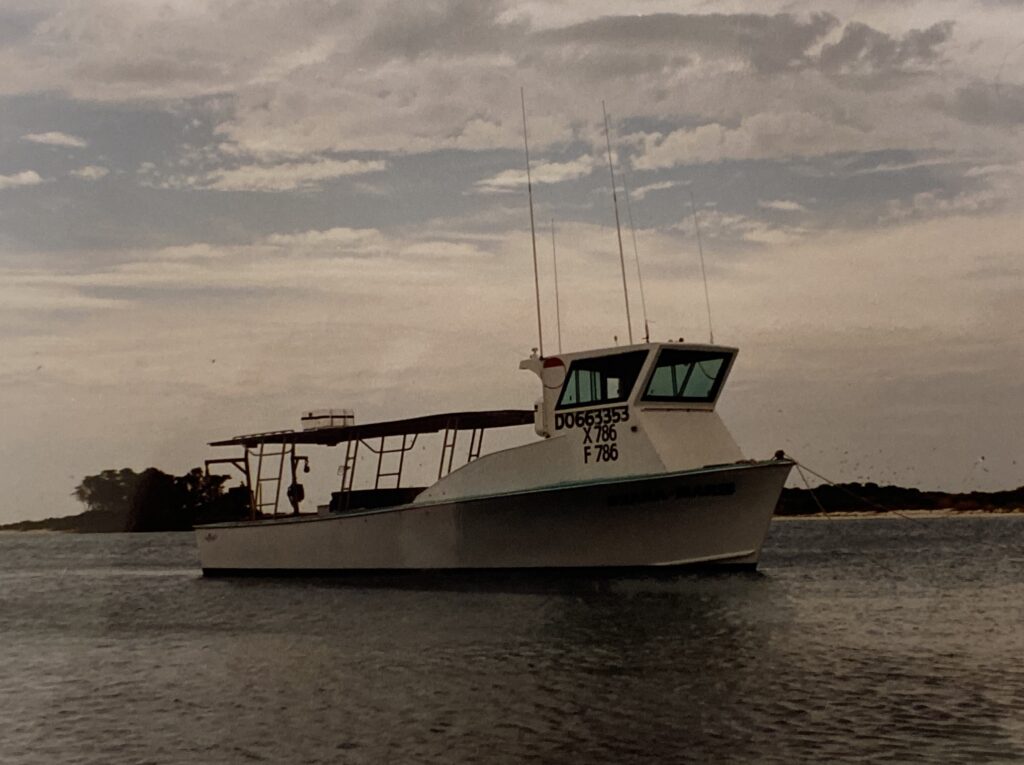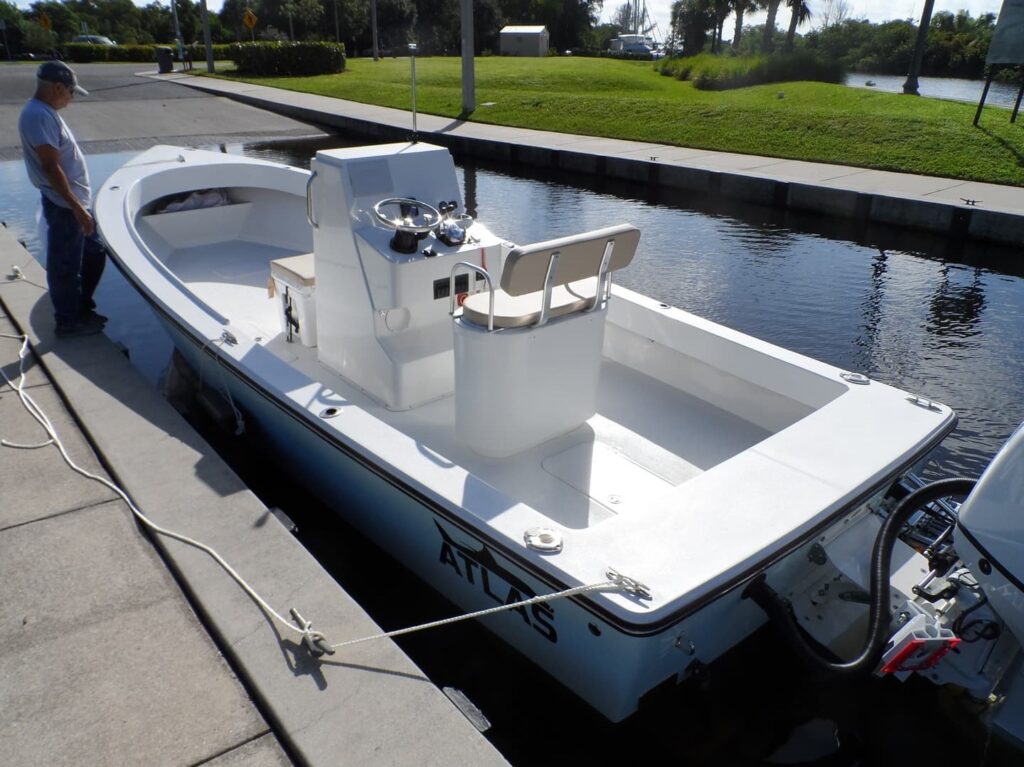In this blog post, we’ll explore ice-keeping options and delve into the benefits of insulated fish bags and drawbacks associated with built-in insulated fish boxes, including issues with macerator pumps, clogged drain tubes, and water seeping into fiberglass.
Ramblins'
One summer when I was in high school I did a stint on a commercial grouper boat that sailed out of Naples, Florida. We left early on Monday mornings and came back late on Friday evenings. The first thing we had to do on Monday mornings was load the huge on-deck fishbox with ice. It took hours and literally hundreds of trips with wheelbarrows from the ice machine to the dock. Our whole trip was based around our relationship with that ice. Too much ice and the captain wasted money. Not enough ice and the trip had to be cut short. I remember having to dig through a week’s worth of bloody melted ice to get to the drain plug in the bottom after we unloaded the week’s catch. Luckily most of our lives don’t revolve around the amount of ice we take with us on Monday, but it is an important consideration when thinking about a new boat. In this blog post, we’ll explore the ice-keeping options and delve into the drawbacks associated with built-in insulated fish boxes, including issues with macerator pumps, clogged drain tubes, and water seeping into fiberglass.


The Rise of Soft-Sided Coolers and Insulated Fish Kill Bags
When it comes to fishing, every angler knows the importance of keeping the catch fresh and safe until it reaches the cleaning table or the dinner plate. Traditionally, built-in insulated fish boxes were the go-to solution for on-board fish storage on boats. However, a new-ish trend has emerged in the fishing community— the use of soft-sided coolers and insulated fish kill bags. Soft-sided coolers and insulated fish kill bags are gaining popularity among anglers for several reasons. These alternatives offer a range of advantages that address common challenges faced by those relying on built-in insulated fish boxes.
Portability and Versatility
Soft-sided coolers and fish kill bags are known for their portability and flexibility. Unlike built-in fish boxes that are often fixed in place, these alternatives can be easily moved around the boat, allowing anglers to optimize their storage based on the day’s catch or the number of passengers on board. This versatility makes them a practical choice for anglers who value adaptability on their fishing expeditions.
Temperature Retention
Soft-sided coolers and insulated fish kill bags are equipped with advanced insulation materials that rival the temperature retention capabilities of traditional built-in fish boxes. The thermal efficiency of these alternatives ensures that your catch stays fresh for an extended period, maintaining its quality until you’re ready to clean or cook it.
Space Efficiency
Boats often have limited space, and built-in fish boxes can take up valuable room on deck. Soft-sided coolers and fish kill bags, on the other hand, can be folded or compressed when not in use, making them a space-efficient solution for anglers who want to maximize the available deck space without compromising on fish storage capacity.
Built-In Insulated Fish Boxes
While built-in insulated fish boxes have been a staple on boats for years, they come with their fair share of challenges. Anglers have reported various issues, including problems with macerator pumps, clogged drain tubes, and water seeping into the boat’s fiberglass structure.
Macerator Pump Failures
One of the recurring issues with built-in insulated fish boxes is the malfunction of macerator pumps. These pumps are responsible for expelling melted ice and excess water from the box, preventing it from becoming a fishy soup. However, macerator pumps are prone to mechanical failures, causing drainage issues and potential damage to the catch. By eliminating the pump, you are eliminating one more set of wires, one more hole in the hull, and one more tube running through the hull (per box/pump). Soft-sided coolers and fish kill bags eliminate the need for complex pump systems, reducing the risk of malfunctions.
Clogged Drain Tubes
Built-in fish boxes often rely on drain tubes to remove water from the storage compartment. Unfortunately, these tubes can become clogged with fish scales, slime, and debris, leading to poor drainage. Many an angler has expressed frustration with the tedious task of unclogging these tubes, especially in the midst of a successful fishing trip. Soft-sided coolers and fish kill bags, with their simpler design, eliminate the need for drain tubes, mitigating the risk of clogs and ensuring efficient water drainage.
Water Seepage into Fiberglass
A common concern among boat owners with built-in fish boxes is the potential for water seepage into the boat’s fiberglass structure. Over time, the constant exposure to moisture can lead to structural damage, affecting the boat’s integrity. Soft-sided coolers and fish kill bags, being external storage options, eliminate the risk of water seepage into the boat, preserving its structural integrity and preventing costly repairs.
Conclusion and Shameless Plug
At Atlas Boatworks we’ve designed the 23F without any built-in insulated fishboxes. While many of our competitors tout their insulated fishboxes as a selling point, we’ve gone the other direction. We love the versatility, cleanability, and roll-and-stash-ability of soft-sided insulated bags. Need to take 50 Capri Suns to your kid’s soccer game? Now you’ve got a cooler bag to use. Big 4th of July picnic? Take your boat’s cooler seat. The options are endless.
We will close on one last major point. The mildewy-funk that comes with spaces on boats that are neither wet nor dry all of the time. In our experience, fishboxes are those exact spaces that when filled with ice and drinks or fish are great, but when they aren’t they are mostly useless. You don’t quite trust them to keep your stuff dry and/or they smell just a little too funky to want to put your beach towel and change of clothes in. So, we’ve proudly opted out of insulated fishboxes as one way to make your Atlas Boatworks 23F more versatile and easier to maintain.
